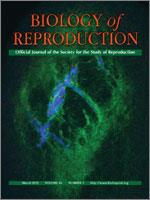Increasing evidence indicates that microRNAs (miRNAs) may be critical players in spermatogenesis. The miRNA expression profiles of THY1 -enriched undifferentiated spermatogonia were characterized, and members of Mir-17-92 (Mirc1) and its paralog Mir-106b-25 (Mirc3) clusters are significantly downregulated during retinoic acid-induced spermatogonial differentiation, both in vitro and in vivo. The repression of microRNA clusters Mir-17-92 (Mirc1) and Mir-106b-25 (Mirc3) by retinoic acid in turn potentially upregulates the expression of Bim, Kit, Socs3, and Stat3. The male germ cell-specific Mir-17-92 (Mirc1) knockout mice exhibit small testes, a lower number of epididymal sperm, and mild defect in spermatogenesis. Absence of Mir-17-92 (Mirc1) in male germ cells dramatically increases expression of Mir-106b-25 (Mirc3) cluster miRNAs in the germ cells. These results suggest that Mir-17-92 (Mirc1) cluster and Mir-106b-25 (Mirc3) cluster miRNAs possibly functionally cooperate in regulating spermatogonial development.
How to translate text using browser tools
23 November 2011
Two miRNA Clusters, Mir-17-92 (Mirc1) and Mir-106b-25 (Mirc3), Are Involved in the Regulation of Spermatogonial Differentiation in Mice
Ming-Han Tong,
Debra Ann Mitchell,
Samantha Dawn McGowan,
Ryan Evanoff,
Michael D. Griswold
ACCESS THE FULL ARTICLE

Biology of Reproduction
Vol. 86 • No. 3
March 2012
Vol. 86 • No. 3
March 2012
microRNA
Mir-106b-25 cluster
Mir-17-92 cluster
retinoic acid
spermatogonial differentiation




